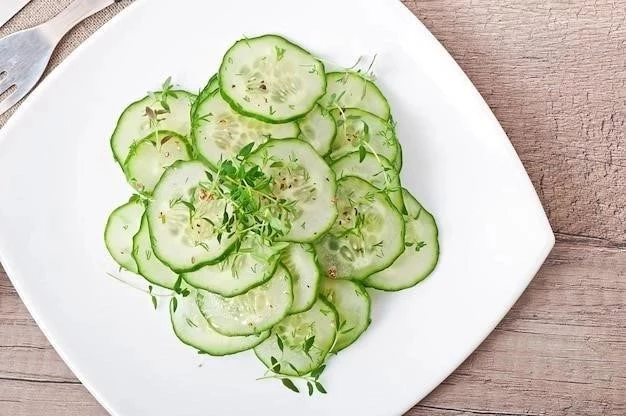
Summer squash, with its vibrant green hues and delicate flavors, is a culinary treasure that embodies the essence of seasonal bounty․ This versatile vegetable lends itself beautifully to a myriad of culinary creations, from simple side dishes to hearty main courses․ Among the numerous ways to enjoy summer squash, spiralizing it emerges as a delightful and innovative approach, transforming this humble vegetable into a culinary masterpiece․
Embracing the Art of Spiralizing
Spiralizing, a culinary technique that involves transforming vegetables into long, noodle-like strands, has gained immense popularity in recent years․ This method not only elevates the visual appeal of dishes but also unlocks a world of culinary possibilities․ Spiralized vegetables, often referred to as “vegetable pasta,” provide a healthy and flavorful alternative to traditional pasta, catering to diverse dietary needs and preferences․
The process of spiralizing is remarkably simple, requiring minimal effort and readily available tools․ A spiralizer, a kitchen gadget specifically designed for this purpose, is the key to achieving perfectly formed spirals․ However, if you lack a spiralizer, a vegetable peeler or a sharp knife can be used to create similar results, although the process may be slightly more time-consuming․
A Symphony of Flavors⁚ Garlic and Basil
Garlic and basil, two culinary stalwarts, form an inseparable duo, their flavors intertwining to create a harmonious symphony of taste․ Garlic, with its pungent aroma and robust flavor, adds depth and complexity to dishes, while basil, with its fresh, herbaceous notes, brings a touch of brightness and elegance․ This dynamic pairing complements the delicate sweetness of summer squash perfectly, resulting in a dish that is both savory and aromatic․
A Culinary Journey⁚ The Recipe
Ingredients⁚
- 2 medium zucchini, washed and trimmed
- 2 medium yellow squash, washed and trimmed
- 4 cloves garlic, minced
- 1/4 cup fresh basil leaves, chopped
- 2 tablespoons olive oil
- Salt and freshly ground black pepper to taste
Instructions⁚
- Spiralize the squash⁚ Using a spiralizer, transform the zucchini and yellow squash into long, noodle-like strands․ If you don’t have a spiralizer, you can use a vegetable peeler or a sharp knife to create thin, ribbon-like slices․
- Sauté the garlic⁚ Heat the olive oil in a large skillet over medium heat․ Add the minced garlic and cook for about 1 minute, until fragrant․ Be careful not to burn the garlic, as it can become bitter․
- Add the squash⁚ Add the spiralized squash to the skillet and cook for 3-4 minutes, stirring occasionally, until the squash softens slightly and becomes tender-crisp․ Do not overcook, as you want to retain the vibrant color and texture of the squash․
- Incorporate the basil⁚ Stir in the chopped basil leaves and cook for another minute, until the basil releases its aromatic fragrance․ Season with salt and freshly ground black pepper to taste․
- Serve immediately⁚ Transfer the spiralized summer squash with garlic and basil to a serving dish and serve immediately․ This dish is best enjoyed fresh, allowing the flavors to shine․
Culinary Versatility⁚ Adapting the Recipe
This recipe serves as a foundation for culinary exploration, allowing you to personalize it to suit your taste preferences and dietary needs․
- Spice it up⁚ For a bolder flavor profile, add a pinch of red pepper flakes or a dash of cayenne pepper to the skillet along with the garlic․
- Embrace herbs⁚ Experiment with different fresh herbs, such as oregano, thyme, or rosemary, to create unique flavor combinations․
- Incorporate protein⁚ Enhance the nutritional value and satiety of the dish by adding grilled chicken, shrimp, or tofu to the skillet․
- Elevate the texture⁚ For a more substantial meal, toss the spiralized squash with cooked quinoa, brown rice, or couscous․
- Low-carb option⁚ If you are following a low-carb diet, serve the spiralized squash with a side of grilled vegetables, a leafy green salad, or a protein source of your choice․
A Feast for the Senses⁚ Presentation and Pairing
The vibrant green hues of the spiralized summer squash create a visually appealing dish that is sure to impress․ To enhance the presentation, arrange the squash in a decorative manner on a serving platter, garnishing with fresh basil leaves and a drizzle of olive oil․
This dish pairs beautifully with a variety of beverages, including chilled white wine, sparkling water, or a refreshing lemonade․ For a more substantial meal, consider serving it alongside grilled fish, roasted chicken, or a hearty salad;
Conclusion⁚ A Summertime Delight
Spiralized summer squash with garlic and basil is a culinary masterpiece that embodies the essence of summer cooking․ This simple yet flavorful dish is a testament to the power of fresh ingredients and the art of culinary creativity․ Whether enjoyed as a light and refreshing side dish or a satisfying main course, this recipe is sure to tantalize your taste buds and leave you craving for more․

Artykuł jest bardzo dobrze napisany i prezentuje spiralizację jako technikę kulinarna w sposób jasny i przystępny. Autor wykazuje się głęboką znajomością tematu i prezentuje interesujące połączenie smaku cukinii z czosnkiem i bazylią. Artykuł jest cennym źródłem inspiracji dla osób poszukujących nowych pomysłów na wykorzystanie letnich dyni w kuchni.
Artykuł stanowi cenne źródło inspiracji dla osób poszukujących nowych pomysłów na wykorzystanie letnich dyni w kuchni. Prezentacja spiralizacji jako techniki kulinarnej jest interesująca i zachęcająca do eksperymentowania. Szczegółowe opisanie smaku i zapachu składników potrawy dodaje artykułowi walorów estetycznych i wzbudza apetyt.
Artykuł jest naprawdę interesujący i zachęca do eksperymentowania z spiralizacją jako techniką kulinarna. Autor wykazuje się głęboką znajomością tematu i prezentuje interesujące połączenie smaku cukinii z czosnkiem i bazylią. Dodatkowym atutem jest praktyczny charakter artykułu, który zawiera konkretne wskazówki dotyczące przygotowania dania.
Autor artykułu wykazuje się głęboką znajomością tematu i prezentuje spiralizację jako technikę kulinarna w sposób profesjonalny i przystępny. Szczegółowy opis smaku i zapachu składników potrawy dodaje artykułowi walorów estetycznych i wzbudza apetyt. Artykuł stanowi cenne źródło inspiracji dla osób poszukujących nowych pomysłów na wykorzystanie letnich dyni w kuchni.